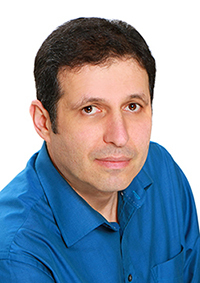BPS at Expo Real
BPS at Expo RealChief architect of BPS Dmitriy Kats spoke at the round table organized by the Moscow City Government in collaboration with the Impress Media Publishing House in the framework of the international trade fair Expo Real.
About 36 thousand people from 35 countries participated in the 16th Trade Fair Expo Real, which was held in Munich on October 7-9. This year Russia was actively represented by regional delegations. Thus, the Ministry of Regional Development presented at the exhibition their projects from 14 Russian regions, including Ivanovo Region, Nizhny Novgorod Region, Yaroslavl Region, Tula Region, Altai Territory, Krasnodar Territory, etc.

The keynote of Russian business program was the possibilities for urban environment modernization. There was an interesting discussion about the Moskva River and industrial areas redevelopment. On the second day of the fair, the theme of public space was continued at the round table organized by the Moscow City Government in collaboration with the Impress Media Publishing House. Chief architect of BPS International group of companies Dmitriy Kats described the cooperation between the city and investors in the framework of public programs realization. According to him, there are three types of collaboration between a city and an investor in the process of such territories creation: 1) the city regulates investor activity; 2) at the investor initiative the space is partially given up for public needs; 3) the investor intentionally creates public space at its own expense.
As an example of city regulation of investment activity, Dmitry Kats mentioned the skyscraper in Frankfurt-am-Main. “The developer of this project was able to build the parking only for 250 cars, while the necessary quantity was 600. It is significant that this was a requirement of the city. The city imposed this restriction on purpose, in order to make the investor finance car-parking building at a distance from this tower. So the employees of this building were forced to go through the city on their way to work. Thus, the city organizes the communication of the city and people and gives the skyscraper residents a possibility to see the city, feel it and communicate with it,” said Dmitriy Kats. As the second example, which is an example of partial transfer of commercial territories over to public functions, the architect mentioned a project of multifunctional center in Krasnodar called Zhemchuzhina (Pearl). ‚ÄúIn this project the private investor with a calculator in his hands came to the conclusion that if he gives out 20% of the area for public space (for the space that would become the center of citizens’ attraction, generate the flows for investor objects, and improve the indicators of visitors conversion into clients), he would commercially win. Creating a public territory and making a good parking becomes more profitable than building up every inch of the site and leaving only narrow streets to pass through,‚Äù said Mr. Kats. ‚ÄúOne of the examples of focused creation of public space by the investor is the Stariy Gorod project in Khimki. By its scope, it will be a center of citizens‚Äô attraction, the role of which is currently played by Mega or Auchan. Investor creates city environment at his own expense both because he cares for his city and because it is profitable!‚Äù¬Ý 08.11.2013 |






